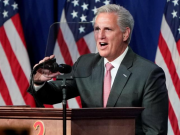The stunning collapse of crypto exchange FTX has brought the spotlight on an Indian-origin executive who was in the close inner circle of FTX founder Sam Bankman-Fried.
The executive, identified as Nishad Singh, is under the scrutiny following reports that Bankman-Fried had secretly moved a whopping $10 billion of customer funds from FTX to another company he founded.
Mysterious Transfer
Preceding the collapse of the exchange, Sam Bankman-Fried transferred $10 billion from FTX to Bankman-Fried's trading company Alameda Research, Reuters reported on Friday. A large portion of that total has since disappeared, they said. One source put the missing amount at about $1.7 billion. The other said the gap was between $1 billion and $2 billion, the report said.

Nishad Singh worked at Alameda, according to reports. Singh was very close to Bankman-Fried and lived with the FTX founder along with 9 others.
"Gary (Chief Technology Officer Gary Wang), Nishad and Sam control the code, the exchange's matching engine, and funds ... If they moved them around or input their own numbers, I'm not sure who would notice," a source told crypto news website CoinDesk.
Joining FTX
Singh, who graduated from the University of California Berkeley, had worked as a software engineer at Facebook before joining Alameda Research, according to The Mint. Singh's LinkedIn profile says that he was the Director of Engineering at FTX. The executive has a bachelor degree in Electrical Engineering and Computer Science.
"It was in an apartment at the time, it was quite early. I think I first visited Alameda when it was like a month into its existence .... What was obvious that the things they wanted to do were really important and really fruitful," Singh said in a podcast in 2020, recollecting his early days at FTX.
FTX filed for bankruptcy in the US after Binance walked away from a rescue deal. The Bahamas-based company went into tailspin following a flurry of customer withdrawals.









